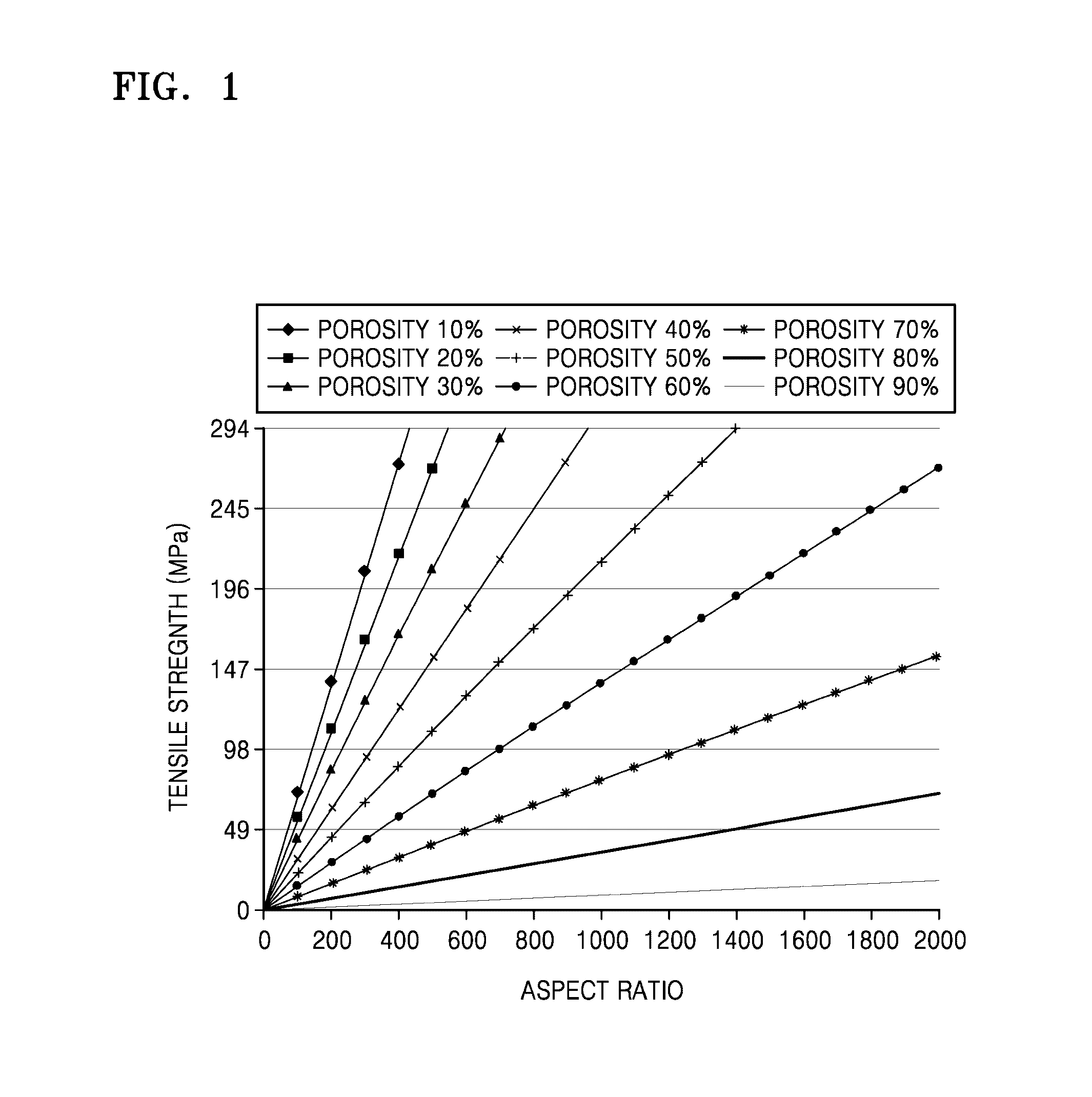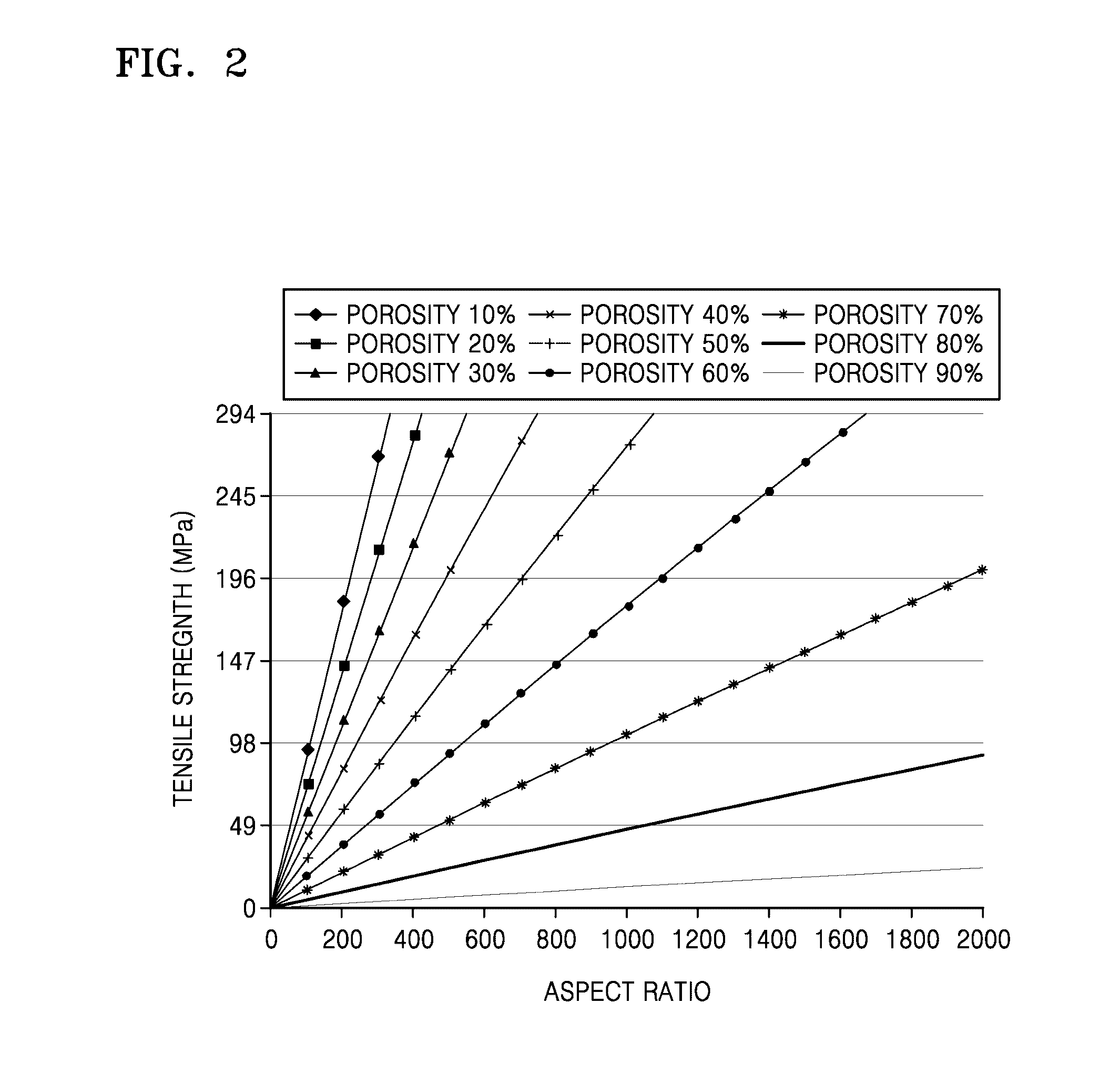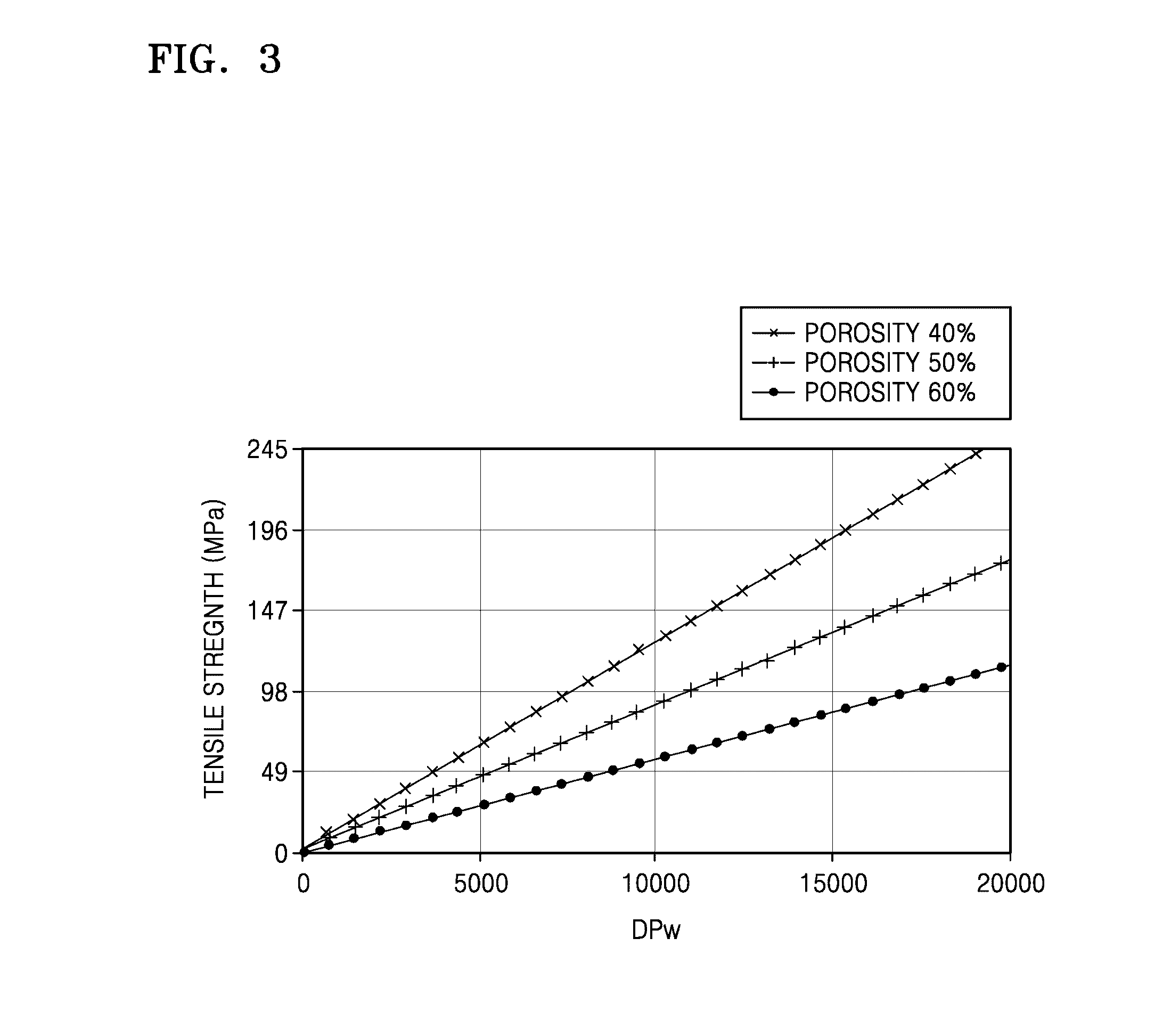Separator including microbial cellulose, method of producing the separator, and use of the separator
a technology of separator and microbial cellulose, which is applied in the direction of cell components, cell component details, electrochemical generators, etc., can solve the problems of reducing the durability of lithium ion batteries and increasing the price of separators
- Summary
- Abstract
- Description
- Claims
- Application Information
AI Technical Summary
Benefits of technology
Problems solved by technology
Method used
Image
Examples
example 1
Production of Microbial Cellulose and Manufacture of Separator including Microbial Cellulose
[0078]1. Production of Microbial Cellulose
[0079]A wild-type strain, Gluconacetobacter xylinum was transferred to 100 ml of Hestrin-Schramm (HS) medium in a 250-ml flask, followed by static culture at 30° C. for 48 hours. The HS medium included 20 g / L of glucose, 5 g / L of bacto-peptone, 5 g / L of yeast extract, 2.7 g / L of Na2HPO4, and 1.15 g / L of citric acid in water.
[0080]The resulting cellulose pellicle was harvested and washed with distilled water three times, followed by heating with a 2% NaOH aqueous solution at 121° C. for 15 minutes. Cells and impurities present in the cellulose pellicle were hydrolysed, followed by washing with distilled water. Thus, a purified cellulose pellicle was obtained. The purified cellulose pellicle was cut in a proper size, and then mixed with water, and pre-homogenized using a general homogenizer (DAIHAN Scientific, Homogenizer HG-15A, Korea) to prepare 500 m...
example 2
Test of Properties of Separator including Microbial Cellulose
[0094]The cellulose nanofiber prepared in Section 3 of Example 1 was used to manufacture a separator and to measure physical properties thereof.
[0095]1. Manufacture of Separator
[0096]0.423 g of a pore forming agent, polyethylene glycol (PEG, number average molecular weight: 6,000) was added to 30 ml of the cellulose nanofiber dispersion obtained by Section 3 of Example 1, which was diluted with water at a concentration of 0.5 wt %, followed by stirring at room temperature and 1000 rpm for 1 hour. 13.8 g of the dispersion thus obtained was poured in a Petri dish having a diameter of 50 cm, and dried at 90° C. for 2 hours. A cellulose nanofiber film (hereinafter, referred to as “non-woven fabric”) formed on the Petri dish was immersed by addition of toluene, and washed with four times to five times to prepare a PEG-removed non-woven fabric, which was dried at room temperature for 3 to 4 hours.
[0097]The dried non-woven fabric...
PUM
| Property | Measurement | Unit |
|---|---|---|
| tensile strength | aaaaa | aaaaa |
| diameter | aaaaa | aaaaa |
| diameter | aaaaa | aaaaa |
Abstract
Description
Claims
Application Information
 Login to View More
Login to View More - R&D
- Intellectual Property
- Life Sciences
- Materials
- Tech Scout
- Unparalleled Data Quality
- Higher Quality Content
- 60% Fewer Hallucinations
Browse by: Latest US Patents, China's latest patents, Technical Efficacy Thesaurus, Application Domain, Technology Topic, Popular Technical Reports.
© 2025 PatSnap. All rights reserved.Legal|Privacy policy|Modern Slavery Act Transparency Statement|Sitemap|About US| Contact US: help@patsnap.com



